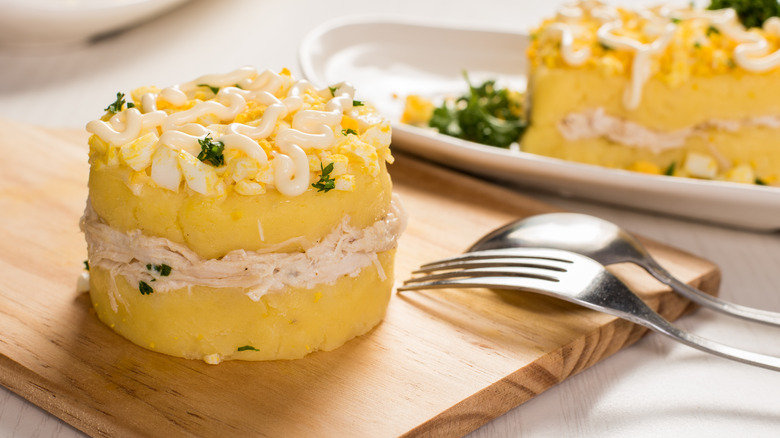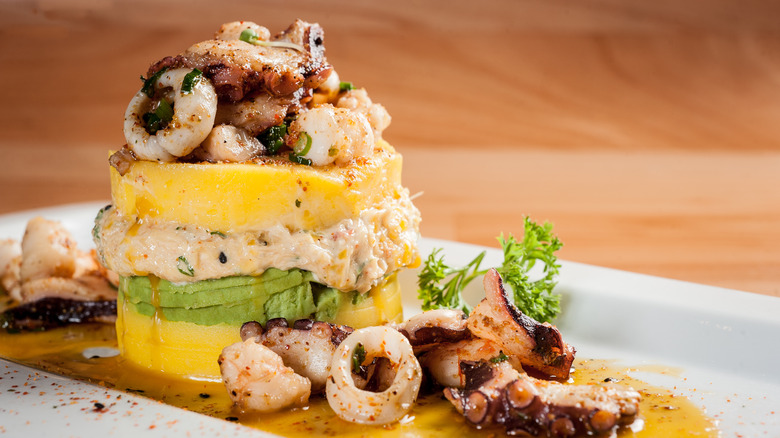Causa: The Peruvian Mashed Potato Dish You Should Know
Peruvian cuisine is one of the most storied and celebrated across the world. Its roots can be traced back to before the Inca Empire, notes Peruvian Food USA, and is emblematic of the rich landscape and varied climates that the nation enjoys. The indigenous people of Peru grew beans, squash, and chili peppers, and it was the Inca, Eat Peru explains, who began the farming of potatoes, a tuber to which the nation is still intrinsically linked. In fact, Peruvian Food USA points out that 400 varieties of standard potatoes and 2,000 different sweet potato variants are cultivated in Peru. The nation even boasts a museum, agricultural park, and research organization devoted to the study of potatoes that even has the potential to help stave off world hunger (via The Guardian).
It should come then as little surprise that among Peru's most iconic dishes, many feature potatoes, such as rich papa a la Huancaína, warm papas rellena, and funky, fermented tocosh, lists Taste Atlas. Though not on their shortlist, yet arguably equally as iconic of a Peruvian potato dish is a layered appetizer that, as Andina explains, can be made according to preference with a number of different fillings, but which never strays from its starchy roots.
Delicious layers
Causa rellena is a visually-arresting molded stack of food that might be called a timbale in a French bistro. Eat Peru explains that causa's constant is the layers of fluffy mashed potato mixed with ají amarillo, a Peruvian yellow pepper that packs a pleasant punch of fruit-infused heat (via The Spruce Eats). In between, myriad different fillings find a happy home — ranging from the traditional chunked tuna to the almost-equally popular shredded chicken to mushrooms. While it is important to note that causa is highly customizable, the interior usually features a smear of mayonnaise.
The name causa is likely a corruption of the word kausaq — meaning "sustenance for life" — from the Quechua language of the Andes Mountains, reports Andina. This is understandable given the health benefits of potatoes and the role they would have played in providing sustenance to the Andean tribes. More recently, the word causa — Spanish for "cause" — came into common use as the hearty meal was given to Peruvian soldiers who went out to fight "for the cause."
If you're looking for a Peruvian potato dish that's a little less composed, try papa a la Huancaína. Again, ají amarillo pepper comes into play, this time as the spicy component of a creamy sauce containing queso fresco and evaporated milk, as Peru Delights explains. This is poured over simple boiled potatoes, sliced hard-boiled egg, and some leafy greens for a piquant take on potato salad.

